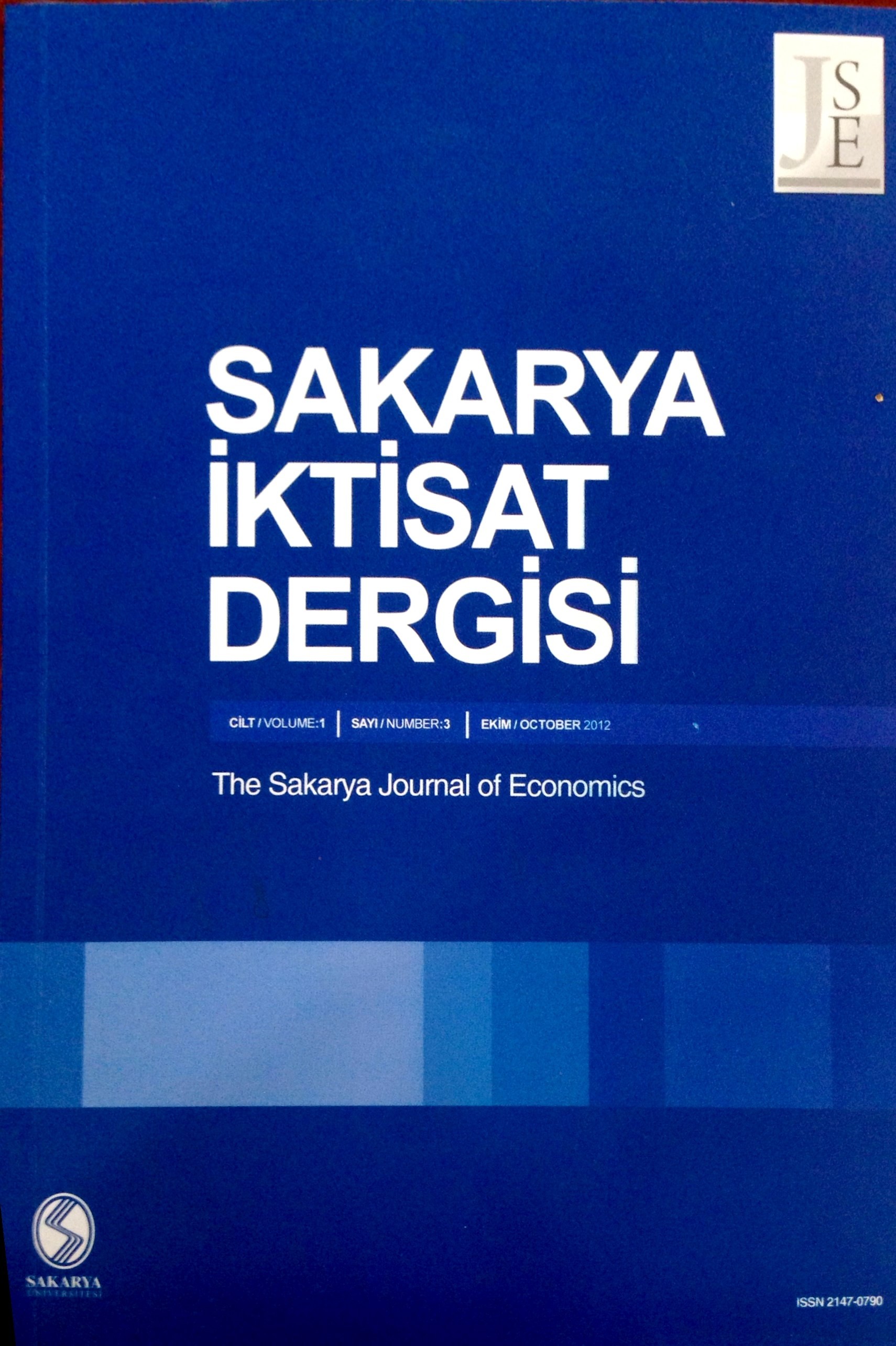AVRUPA’DA YENİLENEBİLİR ENERJİ KAYNAKLARININ FOSİL YAKIT İTHALATI ÜZERİNDEKİ ETKİSİNİN GRANGER NEDENSELLİK VE TODA-YAMAMOTO YÖNTEMLERİ İLE ANALİZİ
Bu çalışma, Avrupa’da 1965 sonrası 54 yıllık dönemde yenilenebilir enerji kaynaklarının fosil yakıt ithalata etkisini yıllık veriler kullanarak, bir Vektör Otoregressif Model (VAR) çerçevesinde irdelemektedir. Yenilenebilir enerji ve fosil yakıt ithalatı ilişkisinin uzun vadede hareket edip etmeyeceği ve değişkenler arasında bir nedensellik ilişkisinin olup olmadığı bu çalışmanın temel soruları. Elde edilen Engle-Granger ve Gregory-Hansen eşbütünleşme testlerinin sonuçları iki seri arasında uzun dönemli bir ilişki var olduğunu gösterirken, hem Granger nedensellik testi hem de Toda ve Yamamoto (1995) tarafından geliştirilen Granger nedensellik yöntemine göre yenilenebilir enerjiden fosil yakıt ithalata doğru ve fosil yakıttan yenilenebilir enerjiye doğru nedensellik bir ilişkinin olmadığı tespit edilmektedir.
Anahtar Kelimeler:
Yenilenebilir enerji kaynakları, , Fosil yakıt ithalatı, , Avrupa, , Granger Nedensellik Testi, , Toda-Yamamoto yöntemi.
ANALYSIS OF THE EFFECT OF RENEWABLE ENERGY SOURCES ON FOSSIL FUEL IMPORTS IN EUROPE BY GRANGER CAUSALITY AND TODA-YAMAMOTO METHODS
This study examines the impact of renewable energy sources on fossil fuel imports in Europe in the 54 years after 1965, using annual data within the framework of a Vector Autoregressive Model (VAR). The main questions of this study are whether the relationship between renewable energy and fossil fuel import will move in the long run and whether there is a causal relationship between them. While the results of Engle-Granger and Gregory-Hansen cointegration tests show that there is a long-term relationship between the two series, according to the Granger causality test and the Granger causality method developed by Toda and Yamamoto (1995), it is determined that there is no causal relationship between renewable energy and fossil fuel imports.
Keywords:
Renewable enerjy sources, , Fossil fuel import, , Europe, , Granger causality test, , Toda-Yamamoto method.,
___
- Referans 1 BOWEN, E. (2015). Three Essays on Renewable Energy Policy and its Effects on Fossil Fuel Generation in Electricity Markets. Graduate Theses, Dissertations, and Problem Reports, 5242.
- Referans 2 CHIEN, T., & HU, J. L. (2008). Renewable energy: An efficient mechanism to improve GDP. Energy Policy, 36(8), 3035–3042.
- Referans 3 FRONDEL, M., RITTER, N., SCHMIDT, C. M., & VANCE, C. (2010). Economic impacts from the promotion of renewable energy technologies: The German experience. Energy Policy, 38(8), 4048-4056.
- Referans 4 ENGLE, R. F., & GRANGER, C. W. (1987). Co-integration and error correction: representation, estimation, and testing. Econometrica: journal of the Econometric Society, 251-276.
- Referans 5 GÖRAN B., JULIA H. (2007). Bioenergy expansion in the EU: Cost-effective climate change mitigation, employment creation and reduced dependency on imported fuels. Energy Policy, 35(12), 5965-5979.
- Referans 6 GRANGER, C. W. (1969). Investigating causal relations by econometric models and cross-spectral methods. Econometrica: journal of the Econometric Society, 424-438.
- Referans 7 HOFFMAN, W. (2014). The Economic Competitiveness of Renewable Energy: Pathways to 100% Global Coverage. Hoboken: Scrivener Publishing; John Wiley & Sons, Inc.
- Referans 8 HOOGWIJK, M., de VRIES, B., & TURKENBURG W. (2004). Assessment of the global and regional geographical, technical and economic potential of onshore wind energy. Energy Economics, 26(5), 889–919.
- Referans 9 NESİMİOĞLU Ş.Ö. (2016). Energy Import Dependency and seeking for new energy technologies European Union Case. International Journal of Energy Applications and Technologies, 3(2), 77-82.
- Referans 10 PETERS, G. P., & HERTWICH, E. G. (2006). Structural analysis of international trade: Environmental impacts of Norway. Economic Systems Research, 18(2), 155–181.
- Referans 11 Qi, T., ZHANG, X., & KARPLUS, V. J. (2014). The energy and CO2 emissions impact of renewable energy development in China. Energy Policy, 68, 60-69.
- Referans 12 STEINKE, F., WOLFRUM, P., & HOFFMANN, C. (2013). Grid vs. storage in a 100% renewable Europe. Renewable Energy, 50, 826–832.
- Referans 13 The World Bank. (2020). World Bank Development Indicators. Retrieved from data.worldbank.org
- Referans 14 TODA, H. Y., & YAMAMOTO, T. (1995). Statistical inference in vector autoregressions with possibly integrated processes. Journal of econometrics, 66(1-2), 225-250.
- Referans 15 UNBEHAUN, S. J. (2017). The relationship between renewable energy production and energy imports among countries in the European economic area. Graduate Theses and Dissertations - Public Policy, 51.
- Referans 16 YORK, R. (2012). Do alternative energy sources displace fossil fuels? Nature Climate Change, 2(6), 441–443.
- Referans 17 ZIVOT, E. A., & ANDREWS, D. (1992). Further evidence on the great crash, oil prices shock and the unit root hypothesis. Journal of Business and Economics Statistics, (10).
- ISSN: 2147-0790
- Yayın Aralığı: Yılda 4 Sayı
- Başlangıç: 2012
- Yayıncı: Sakarya Üniversitesi
